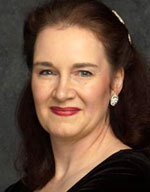Ascending – September 16, 2012
Three Compositions Inspired by Nature and One Created by a Force of Nature
by Sanford Brotman
A warm welcome to our 32nd season at Amadeus Concerts. Before going to the usual format of informing you about the composers and suggesting some points to focus on, I have something else for you to ponder; something that I am frankly surprised took me seven years of writing these notes to realize.
If you count up the number of musicians on stage, including the soloist and the conductor, you might get a figure like 38. Then assuming an average of 25 years of studying and performing for each—some, of course, much more and some much less, but an average —we have more than 900 years in front of us.
Make of it what you will, but when I listen to music on the radio, TV, on a CD, DVD, or whatever gadget I might be tuned into, I may feel a connection to the music, but not to the musicians, not to the effort of fellow beings who make it. Today, as I have with all live performances,I will feel that connection. But until today I never quantified, to quote
Winston Churchill, the “blood, toil, tears, and sweat” that it takes to get here. Today, and from now on, when I applaud it will be as much for this as for the fine music.
The Hebrides Overture (a.k.a. Fingal’s Cave) by Felix Mendelssohn (1809-1847)—German. Like most young men of his day with breeding and wealth, Mendelssohn went on the Grand Tour: to England, to France and Italy. From his visit to Scotland and to the Hebrides Islands off its coast, he was moved to start making two beautifully atmospheric works: today’s short piece and the very popular Symphony No. 3 (the “Scottish”). When asked for his impression of his visit, he said, “It cannot be told, only played.”
Symphony No. 8 in F major, Opus 93 by Ludwig van Beethoven (1770-1827)—German. He composed his penultimate symphony in 1812 and conducted its first performance in 1814.
After so much groundbreaking music, the enfant terrible seems to return to classicism: more proportional and balanced. Except that the 1st and 4th movements are like runaway horses (69 bars/minute in the first and 84 in the last). Also, there is no slow movement (and Beethoven was master of the slow movement).
1st movement (Allegro vivace e con brio)—There is no slow introduction here: in a hurry. Takes a brief respite, and then ramps up again: bold, imaginative, capricious, fiery. The intensity is made more intense by the occasional silences.
2nd movement (Allegretto scherzando)—Instead of a slow movement here, we are treated to a musical joke, a witty salute to the inventor of the first practical metronome, Johann Maelzel. Listen for the “amiable” ticking that dominates this movement.
3rd movement (Tempo di Menuetto)—More courtly, a throwback to Haydn and Mozart. Listen for the famous horn solo.
4th movement (Allegro vivace)—Back to hyper-speed, but even faster! After the composer brings the tempo way down, notice the “breaths of silence.” Then comes a startling explosion. It “normalizes” at this point and appears to be headed for a swift, light finale. Don’t you believe it: Beethoven will give us an enormous coda, ending in a jubilant climax.

